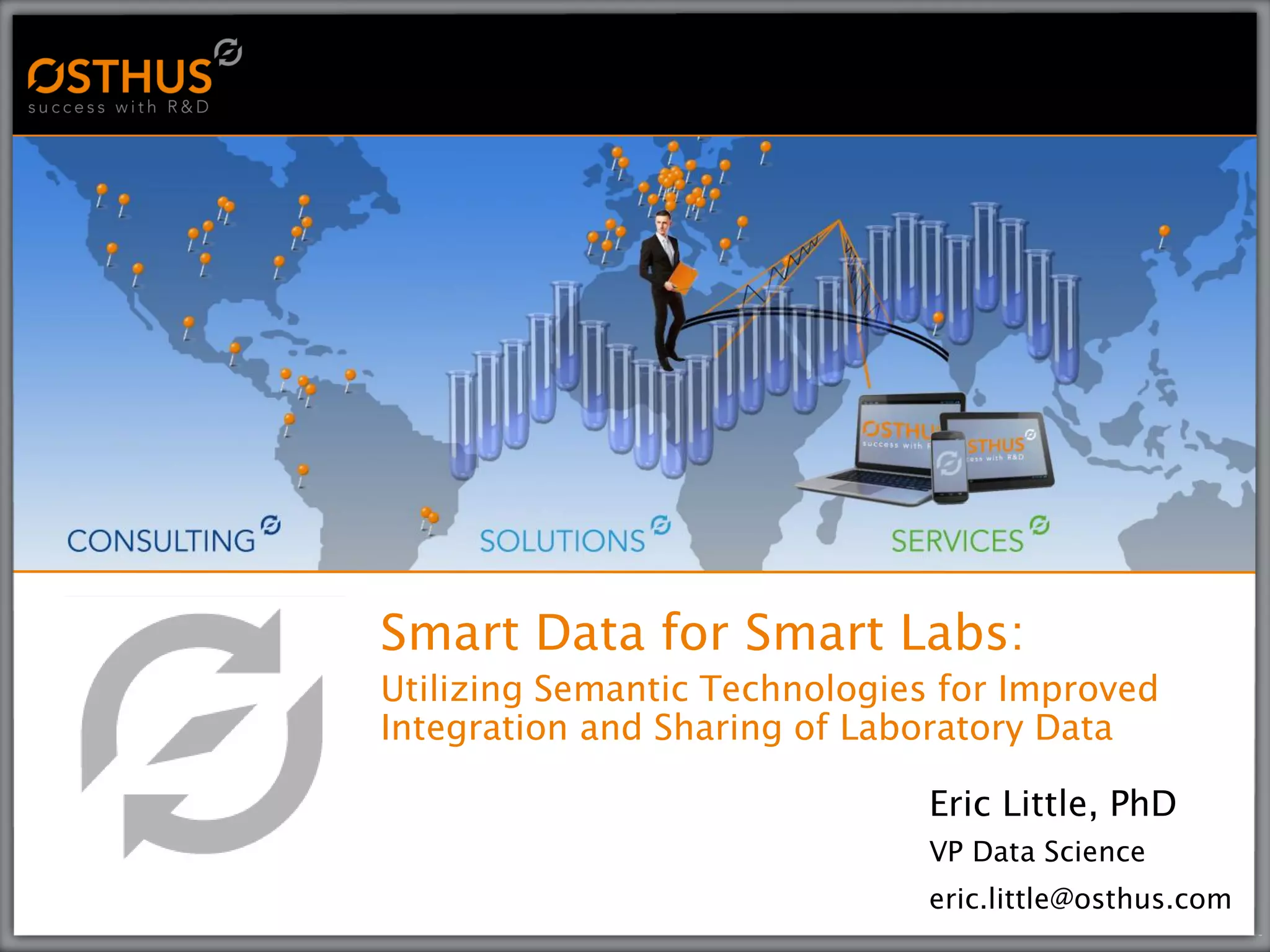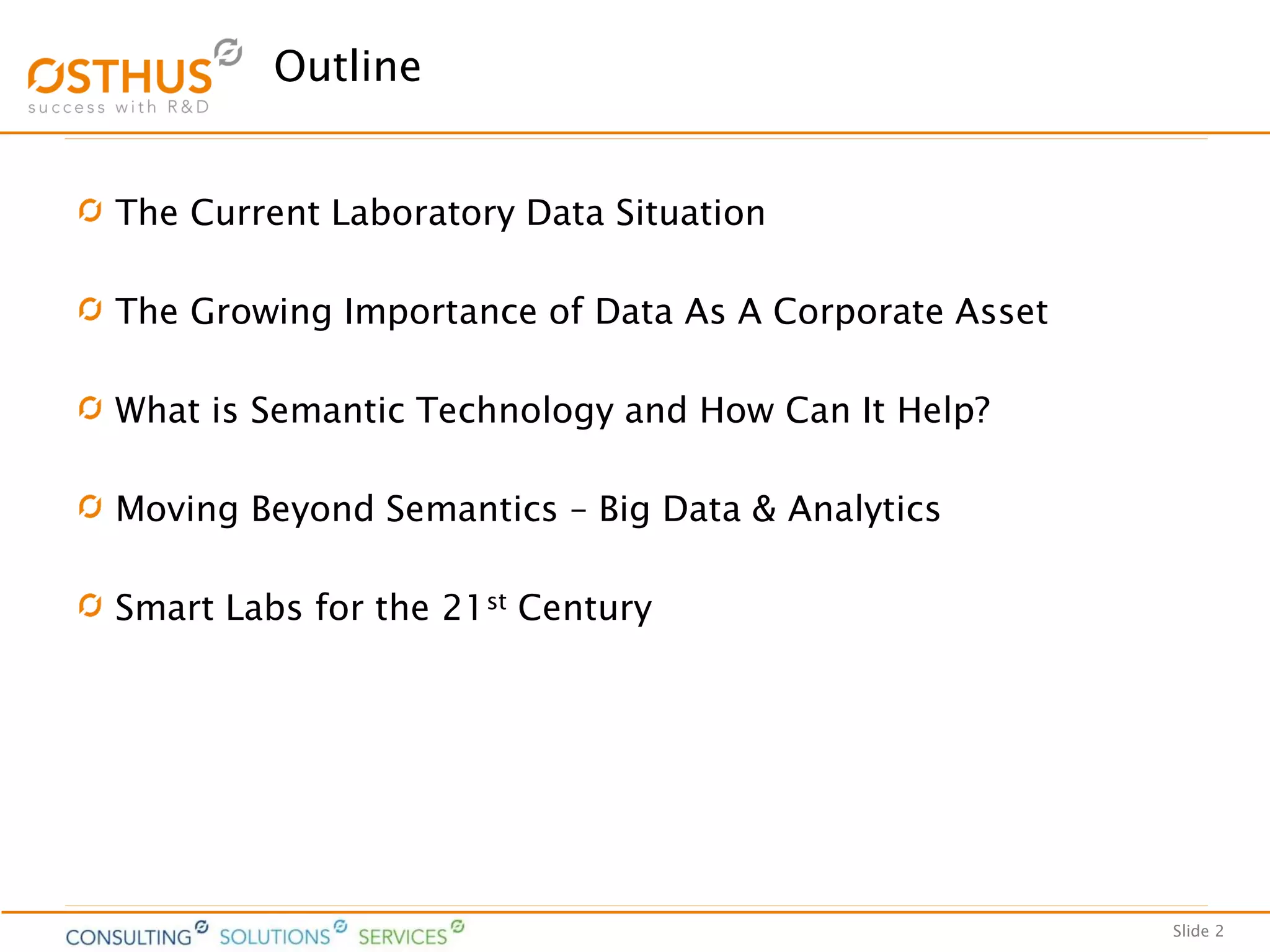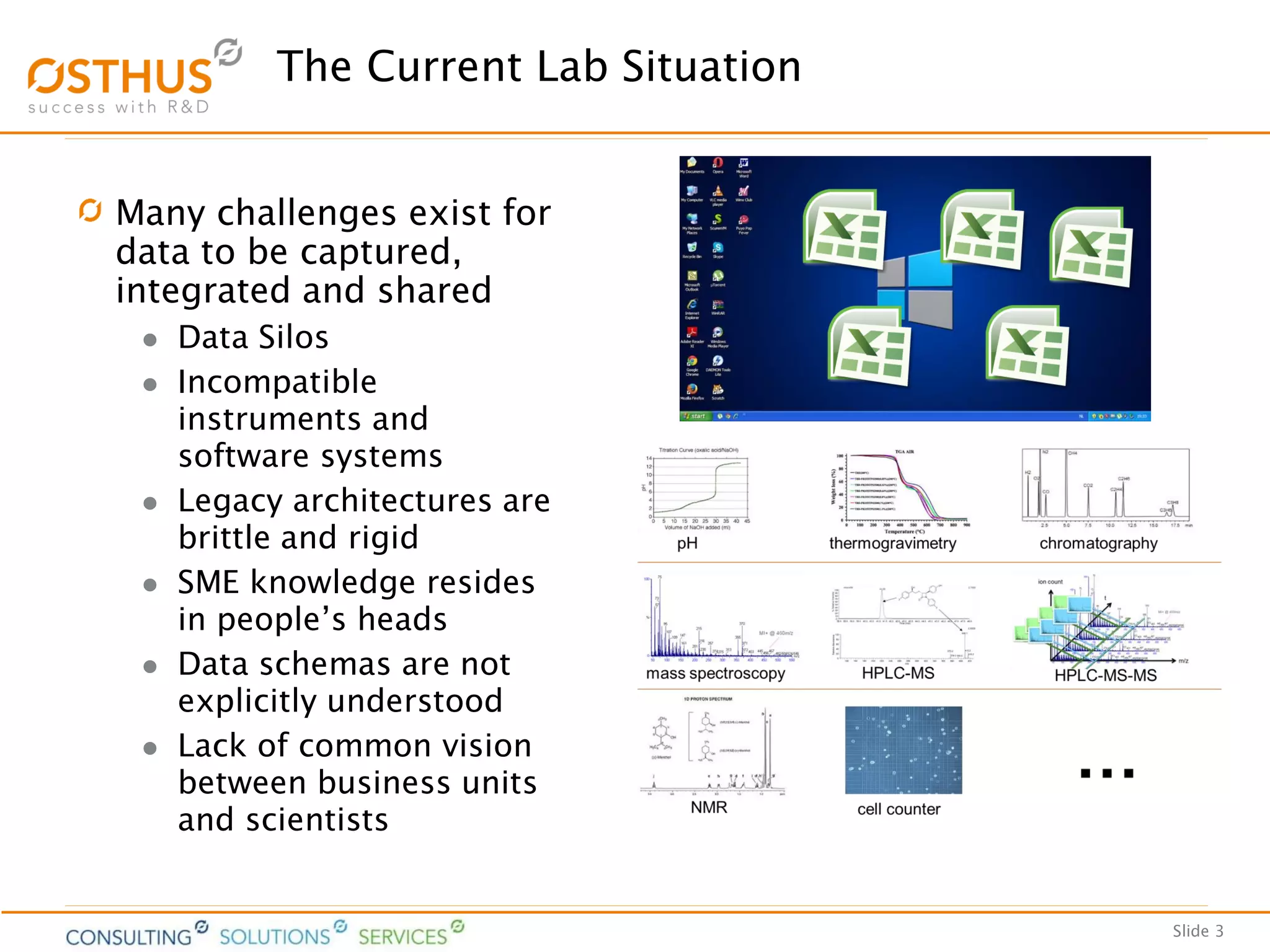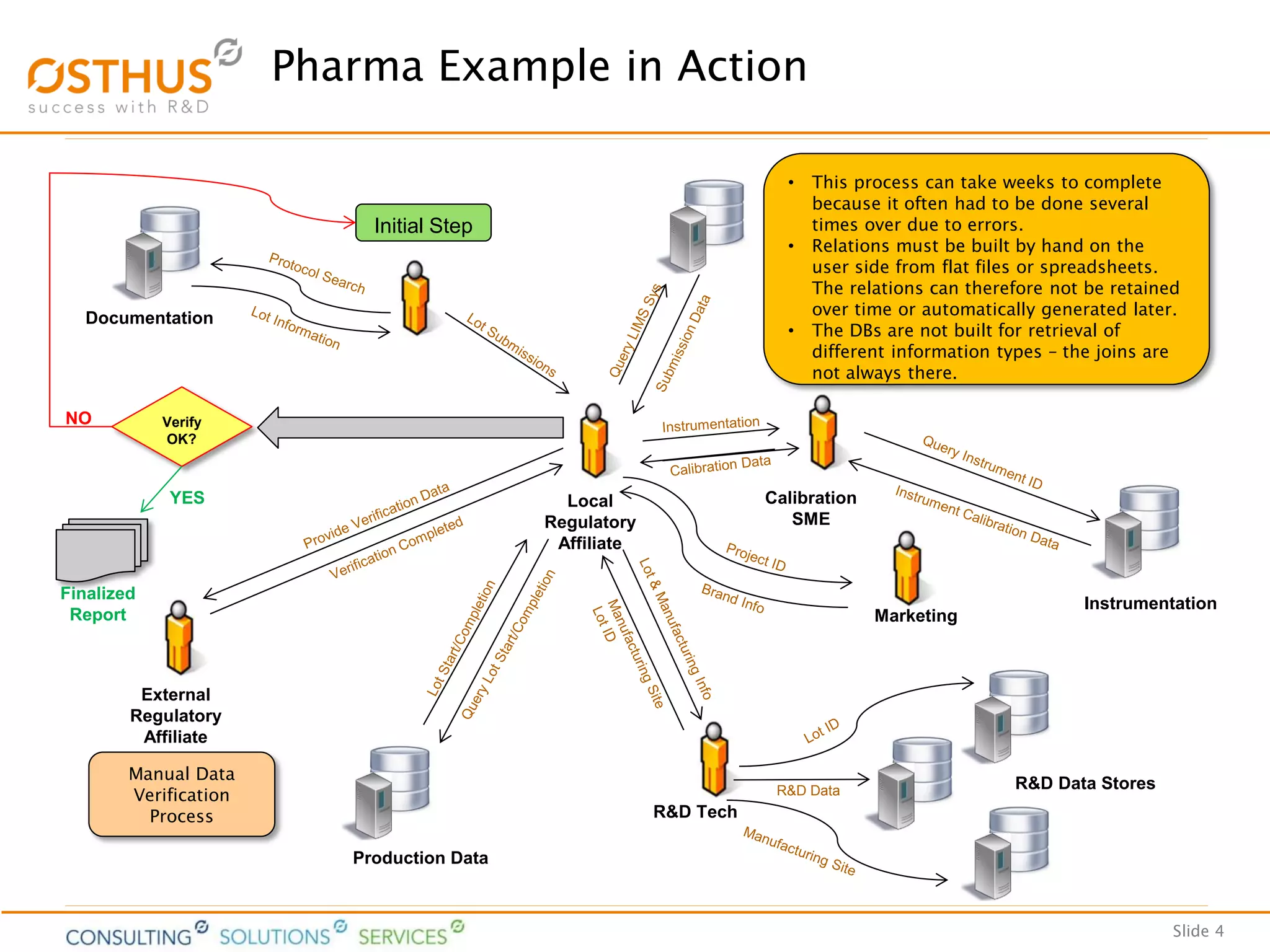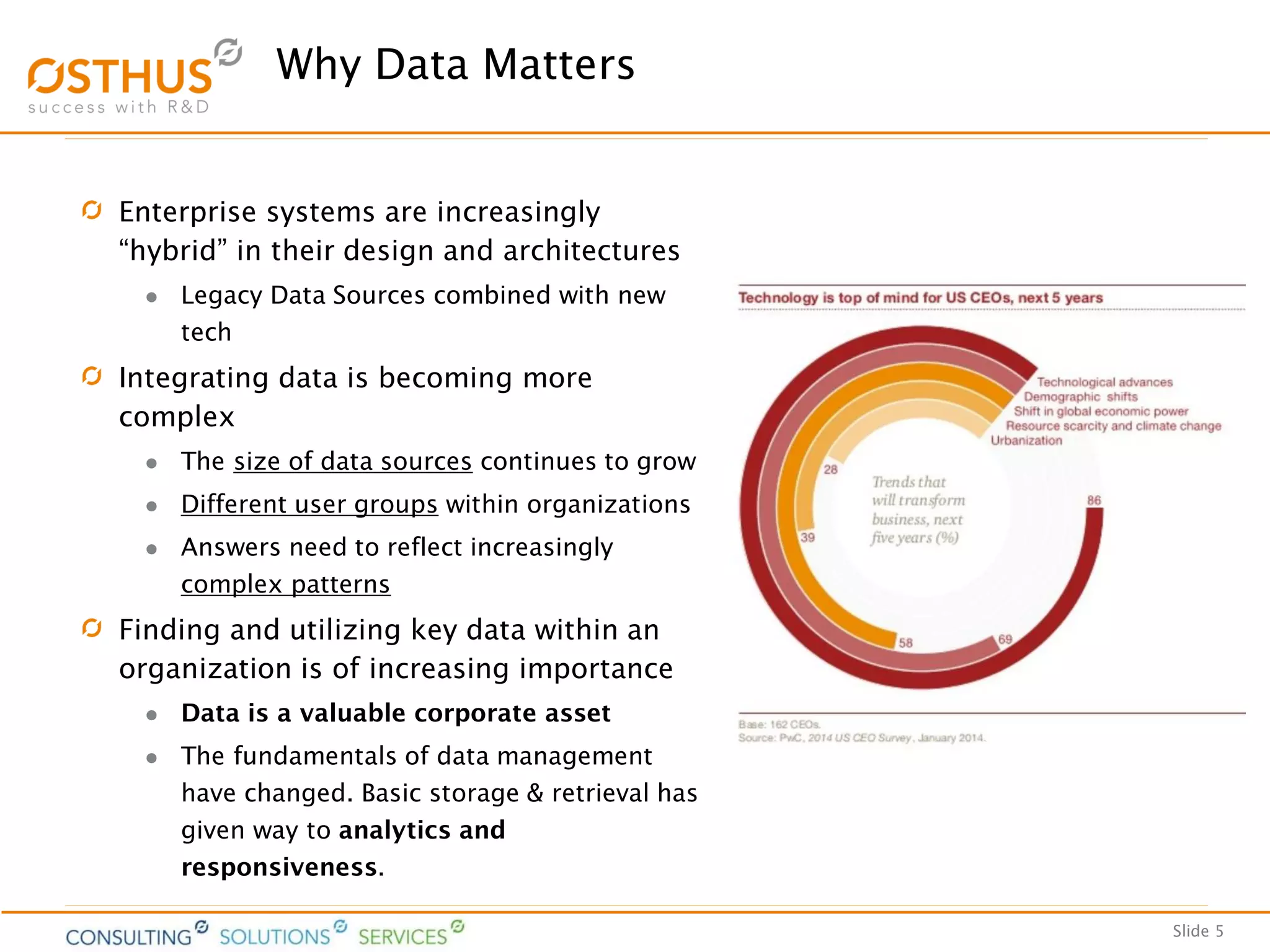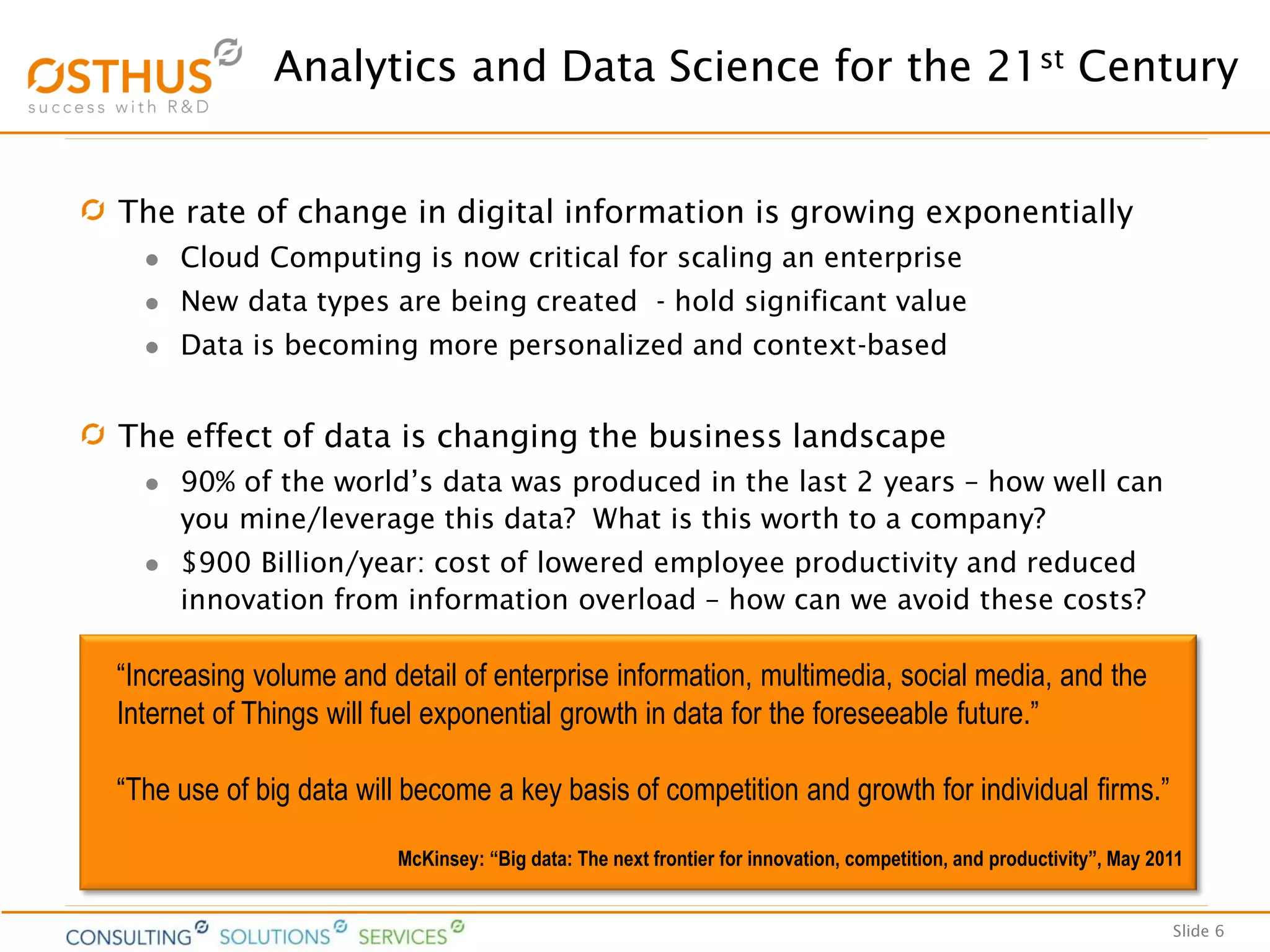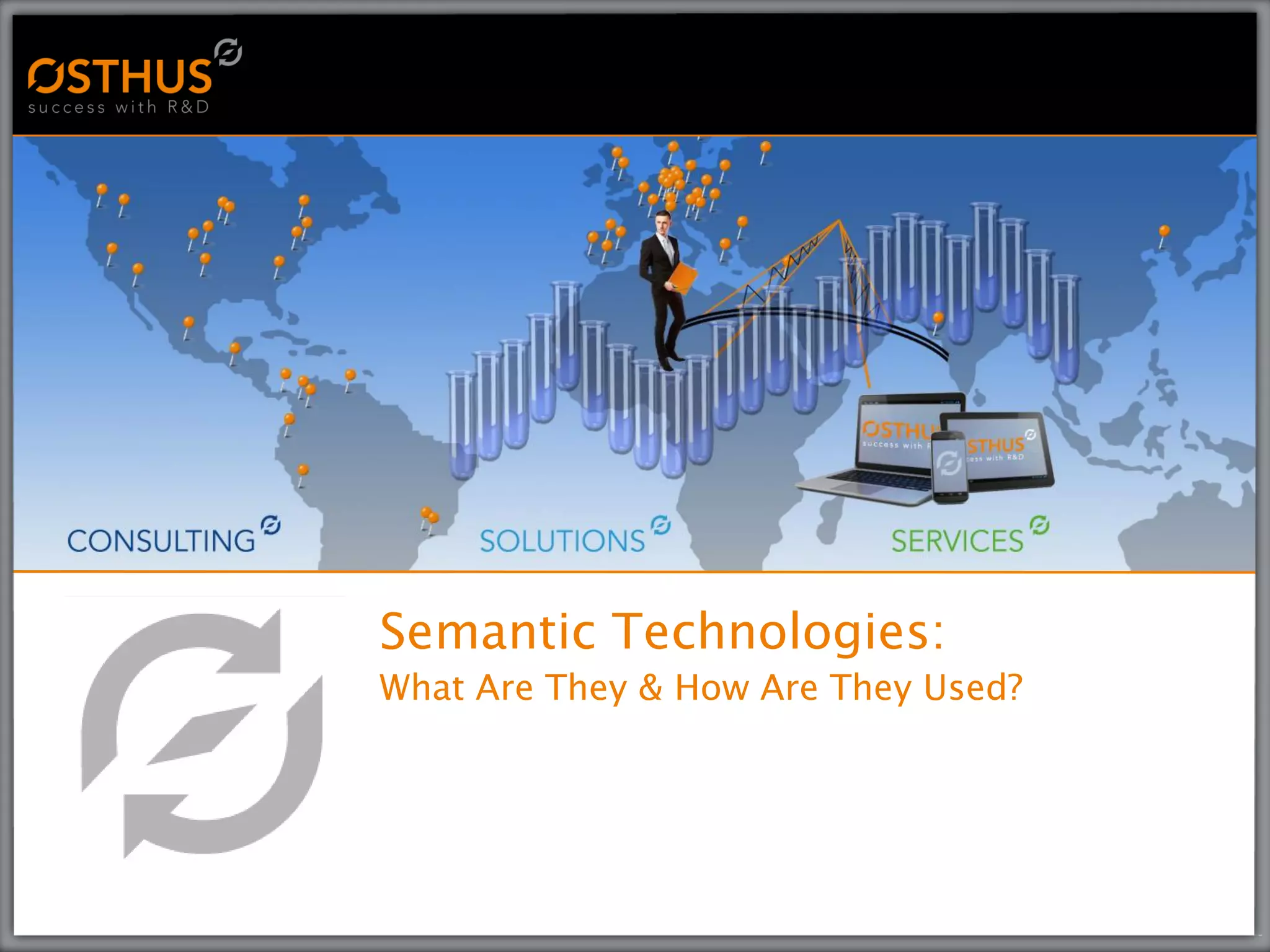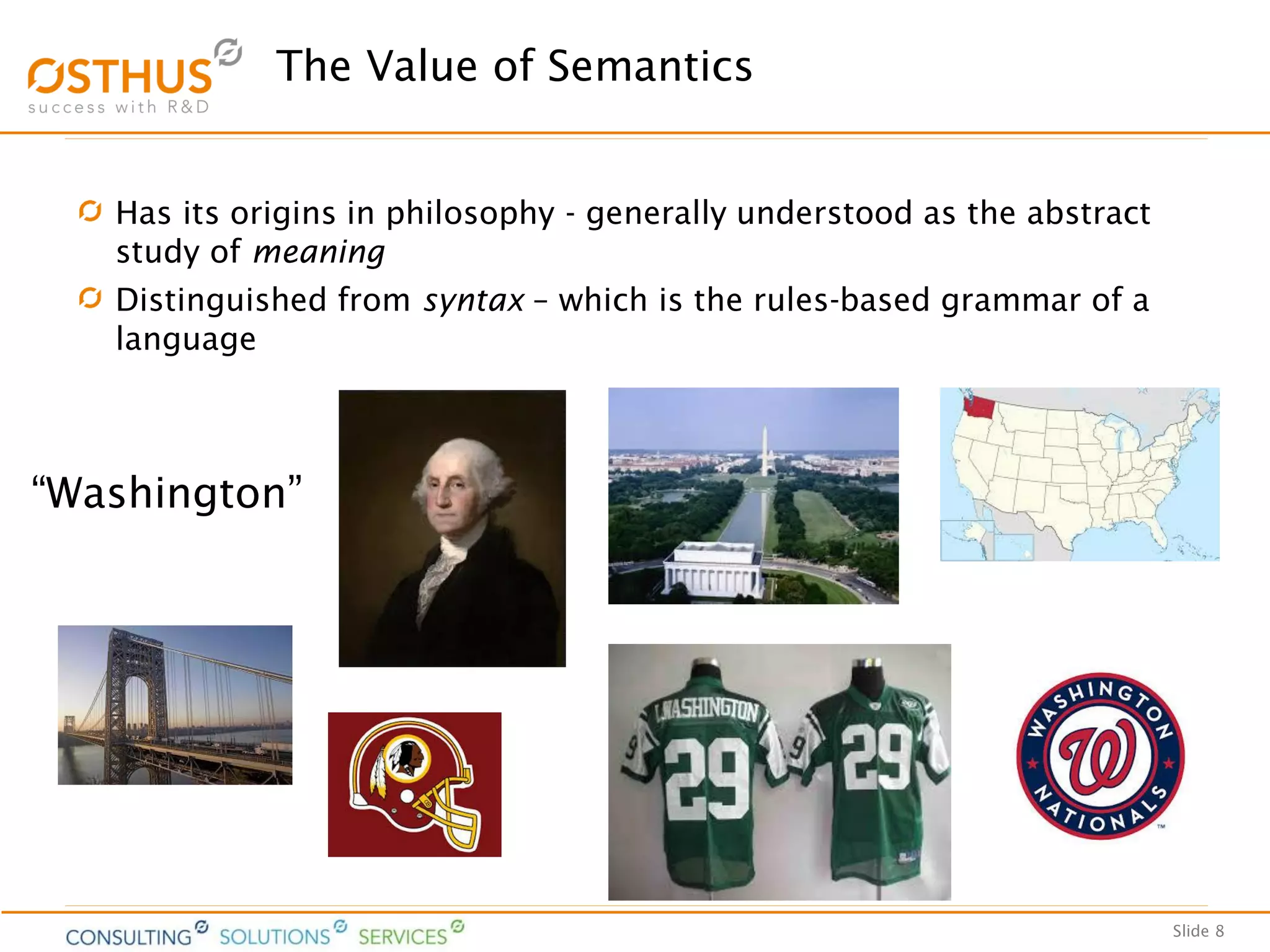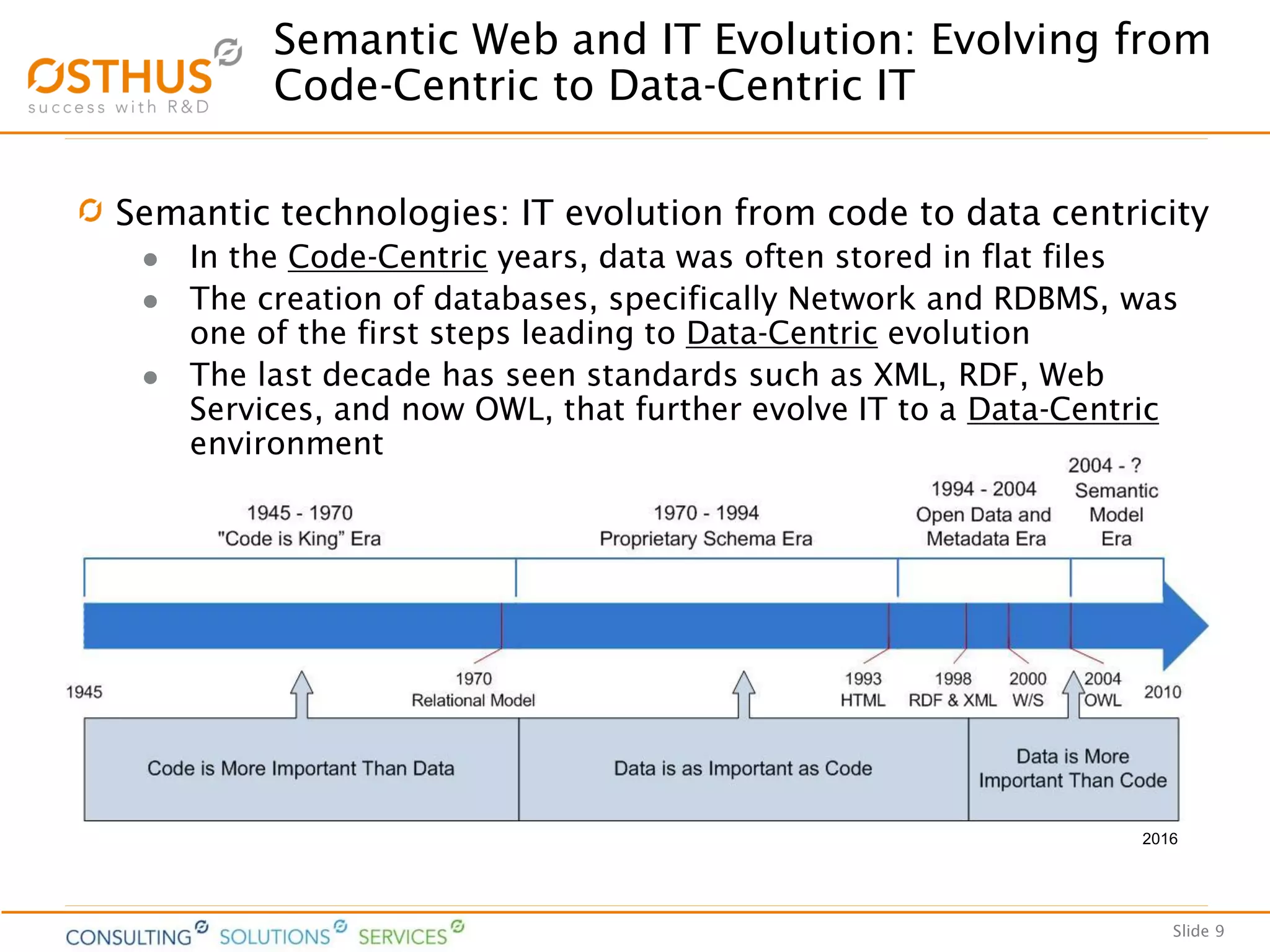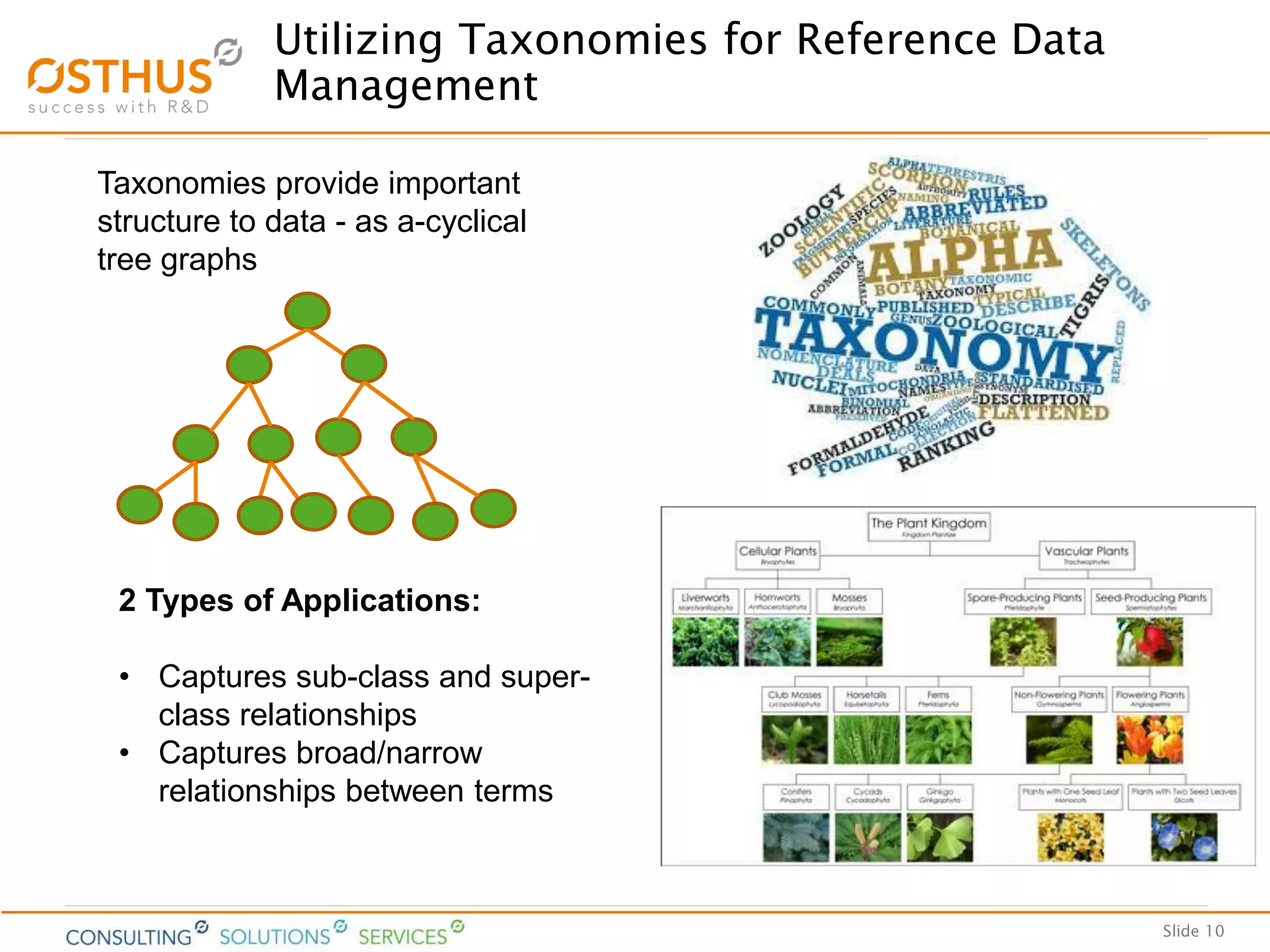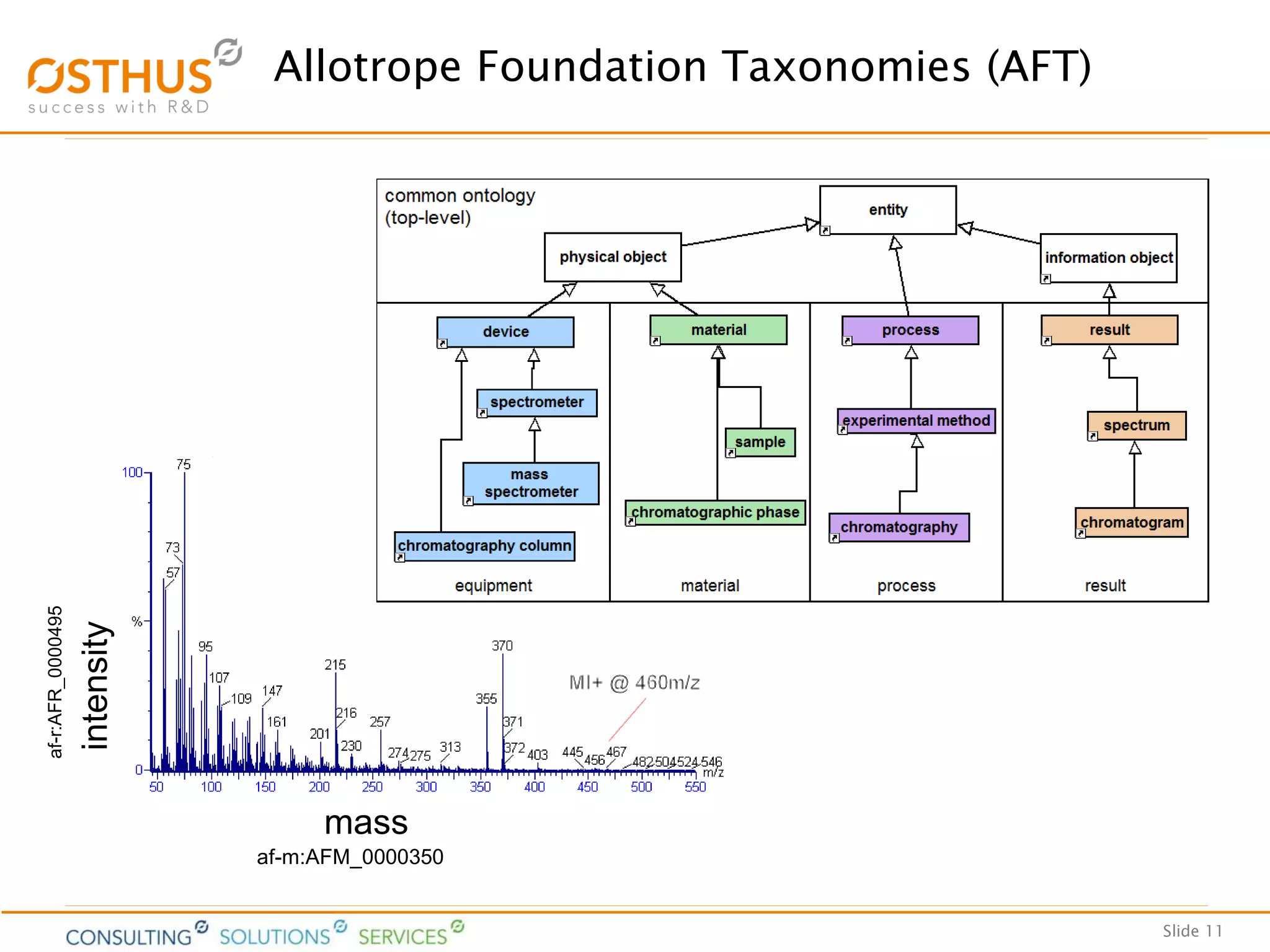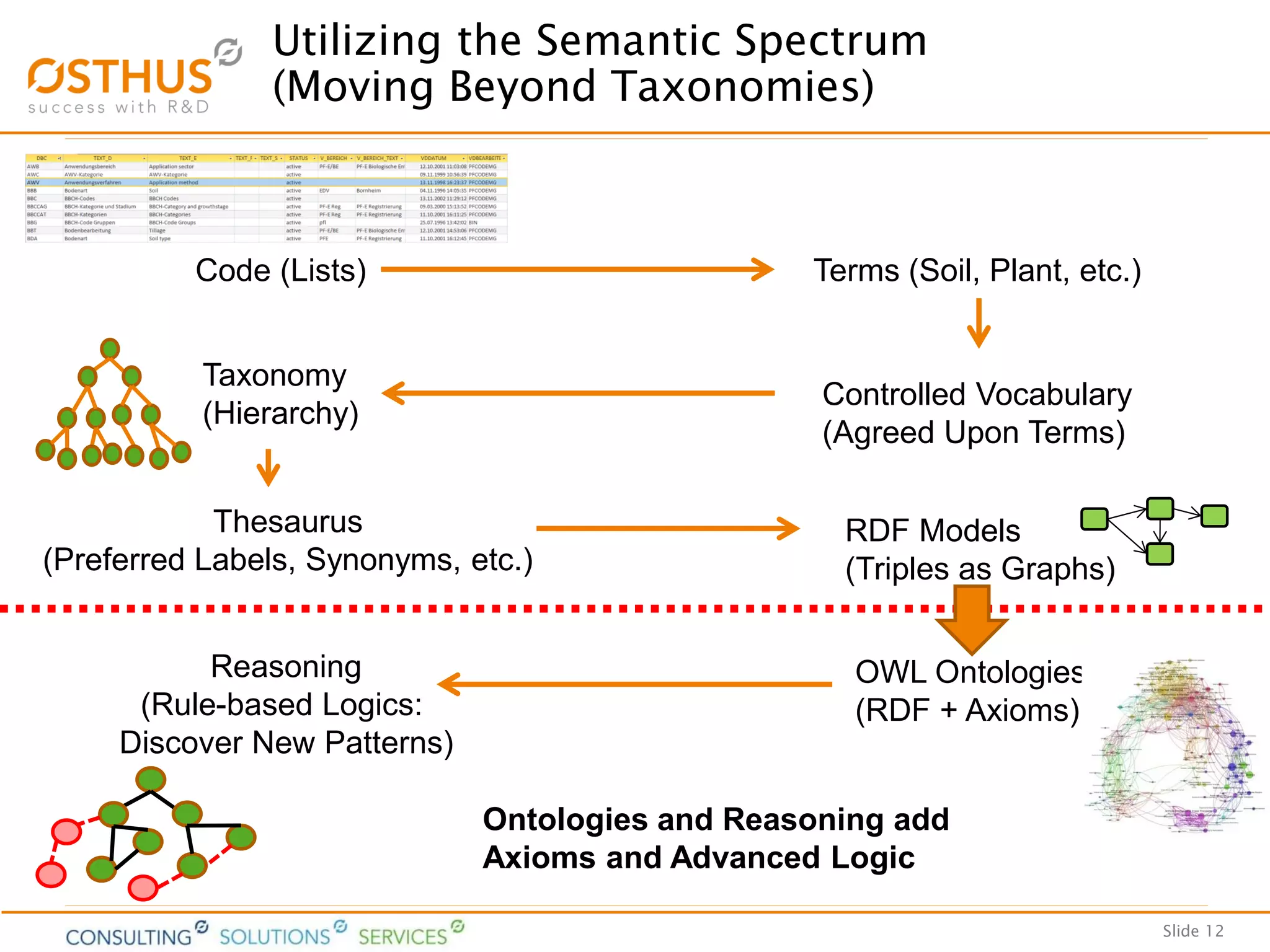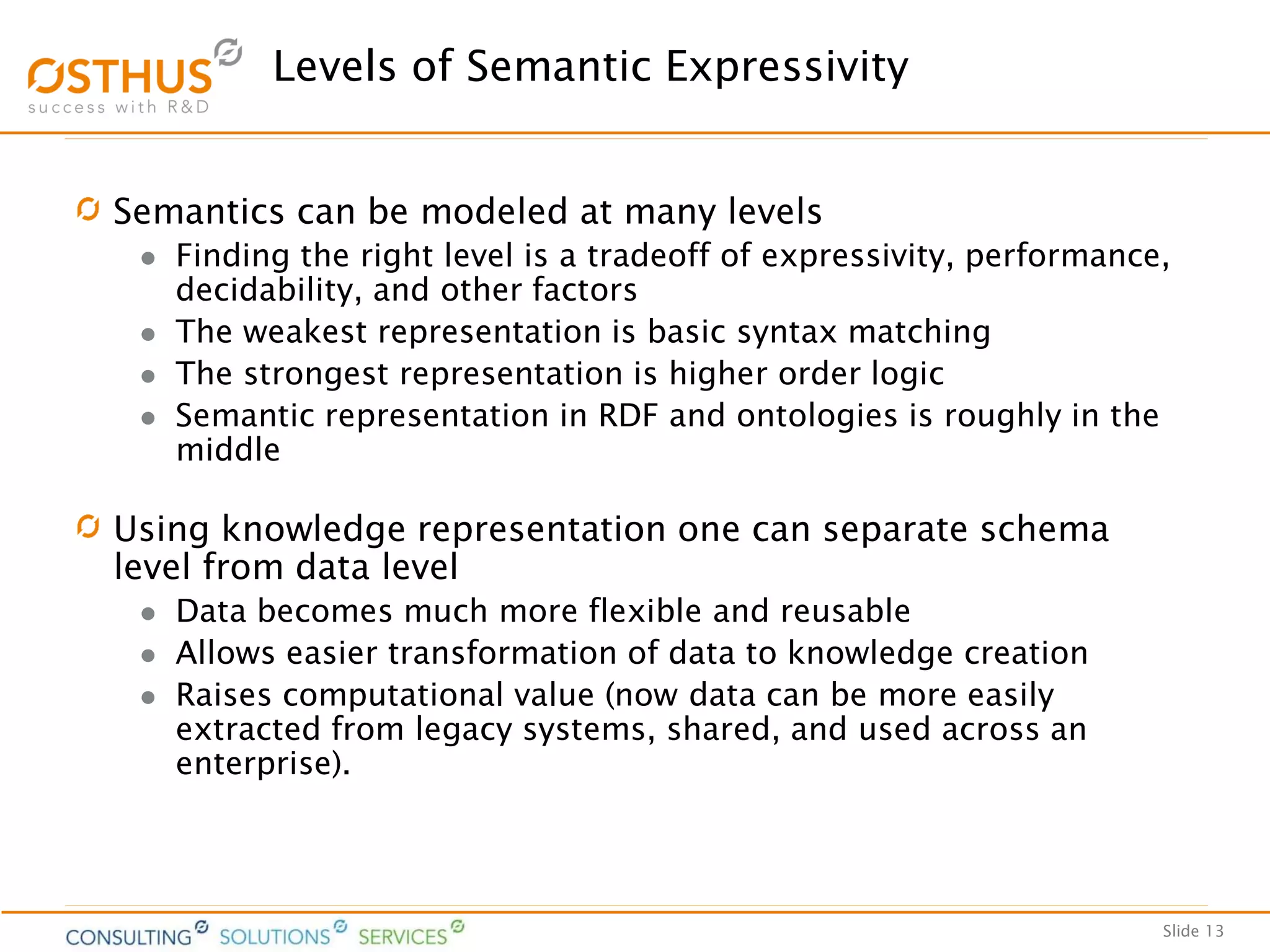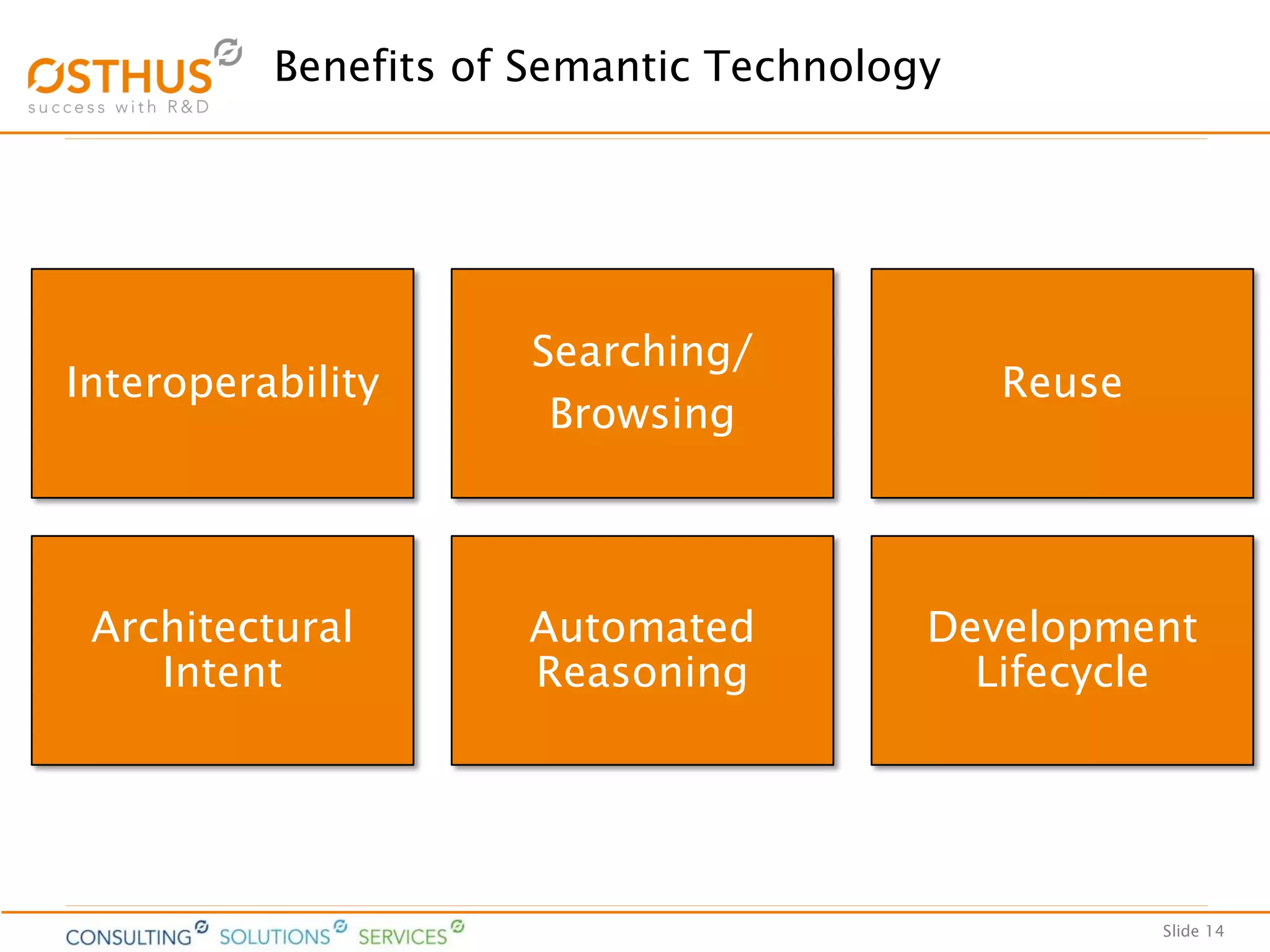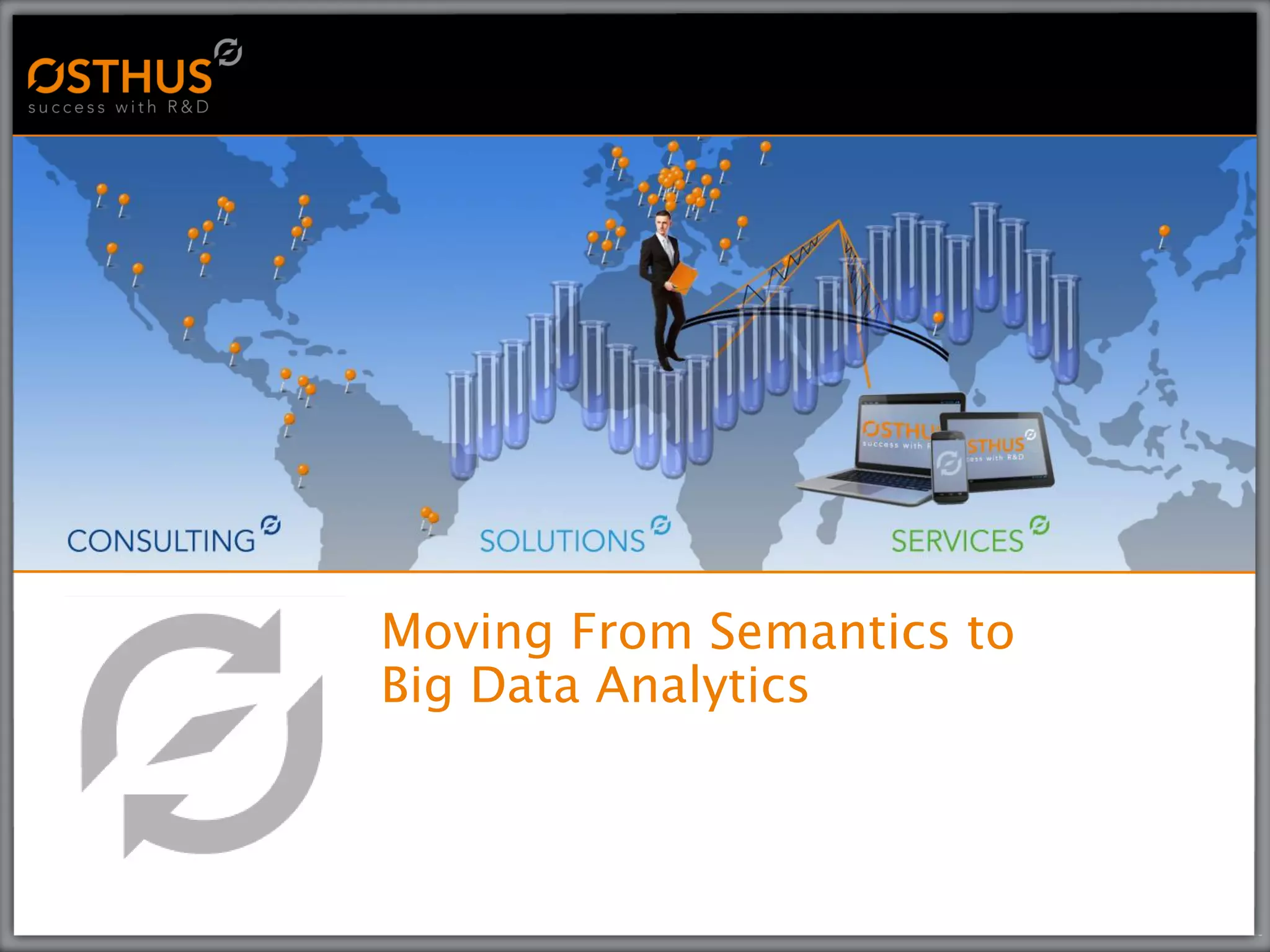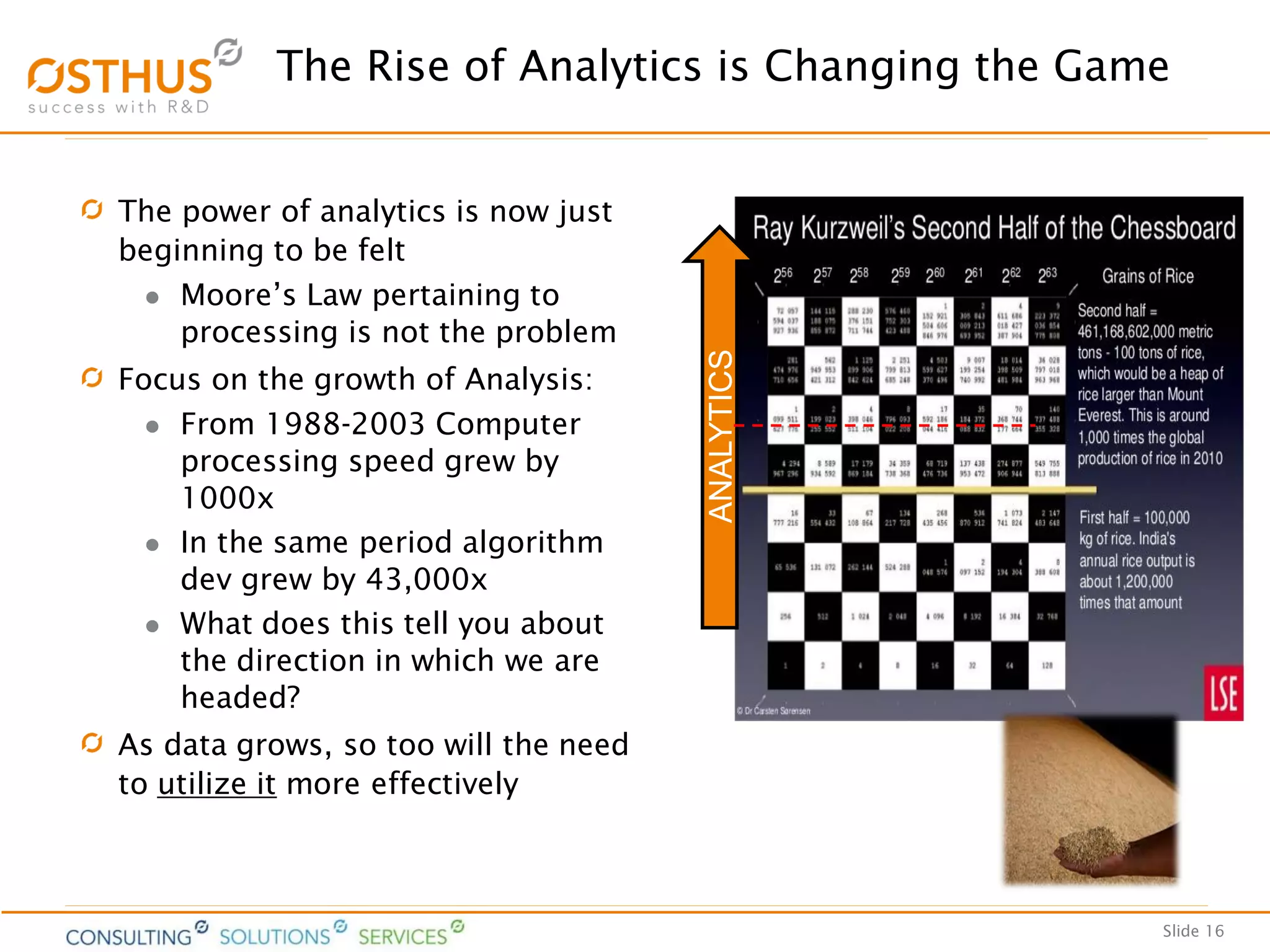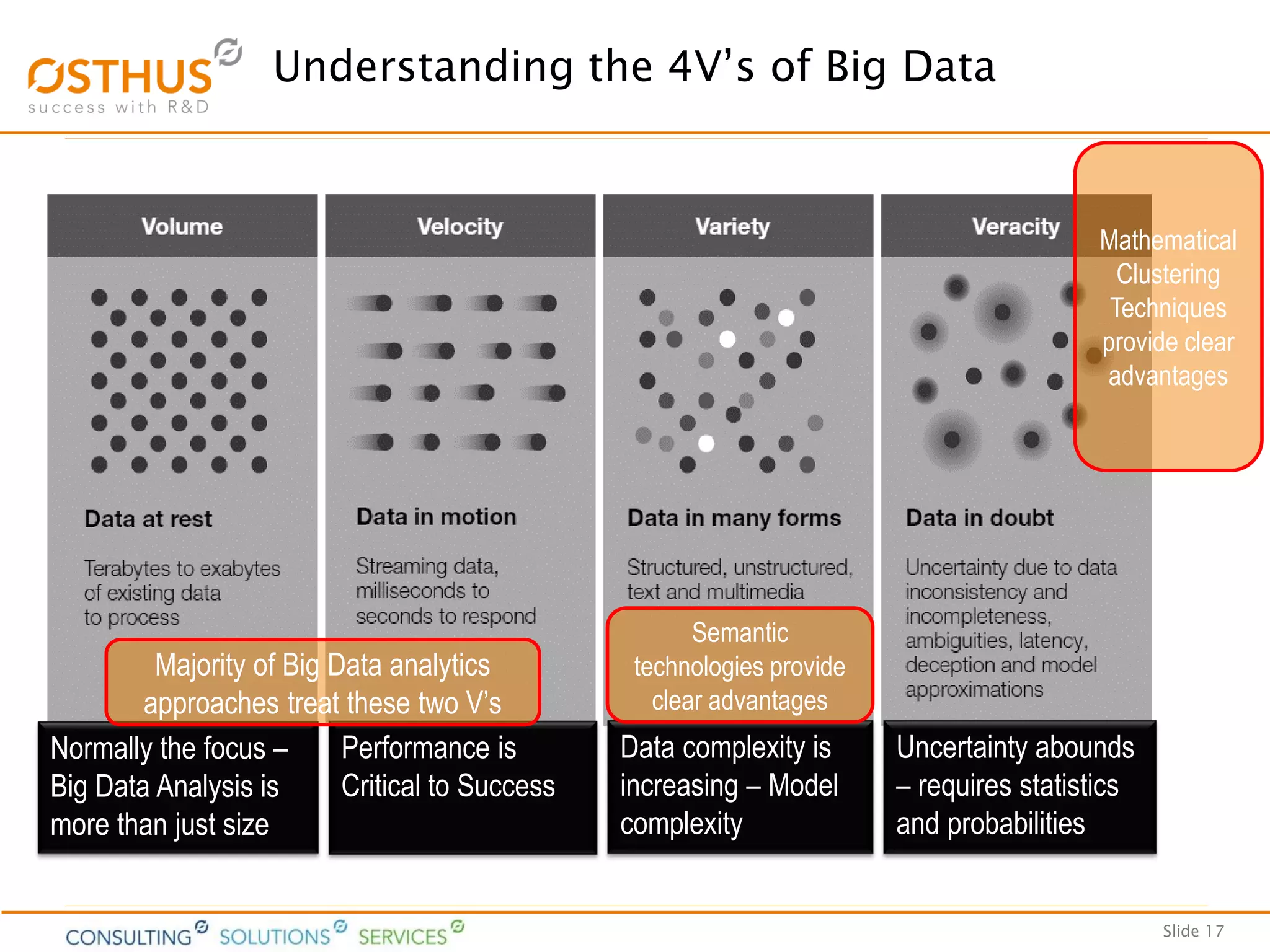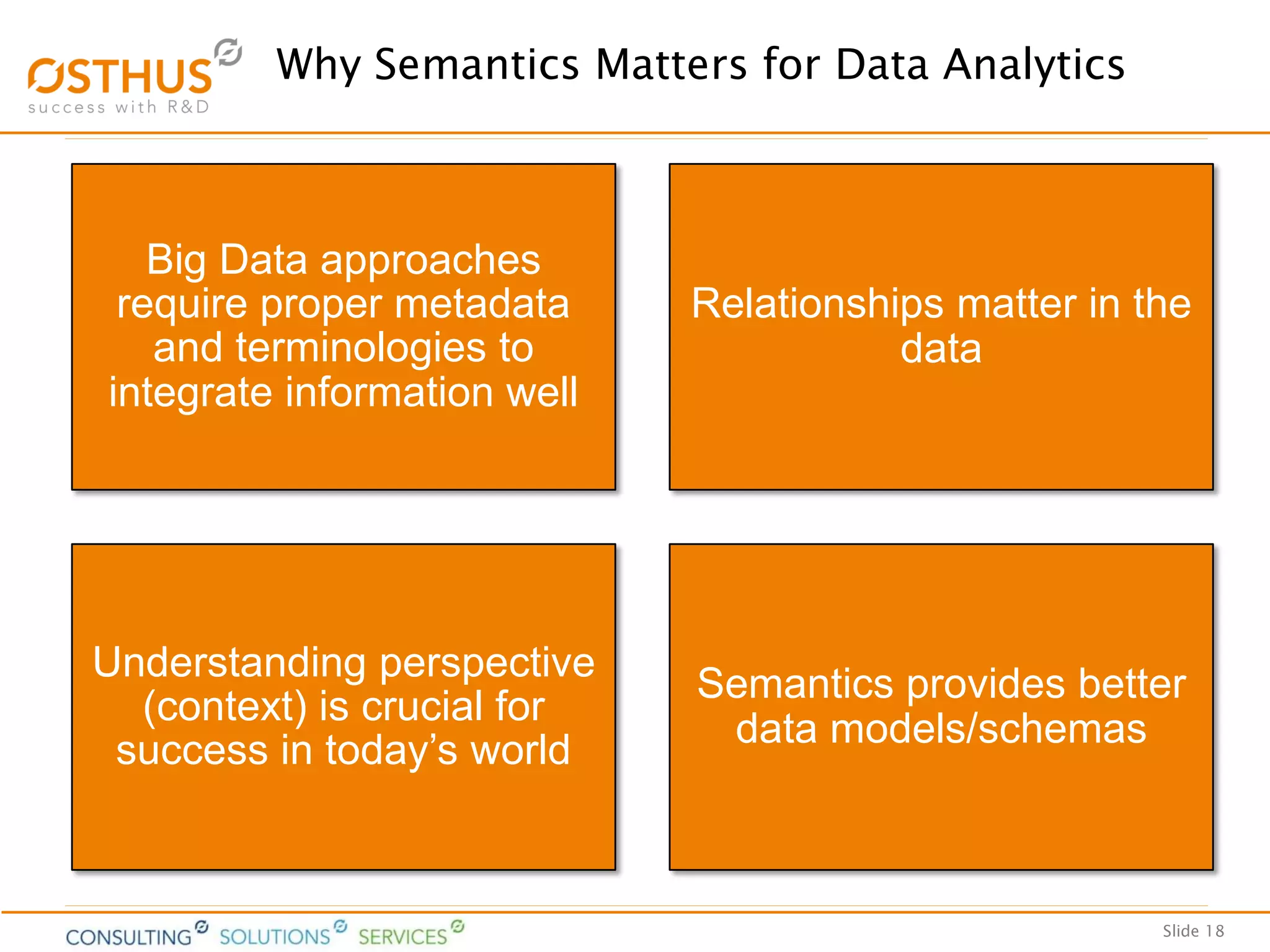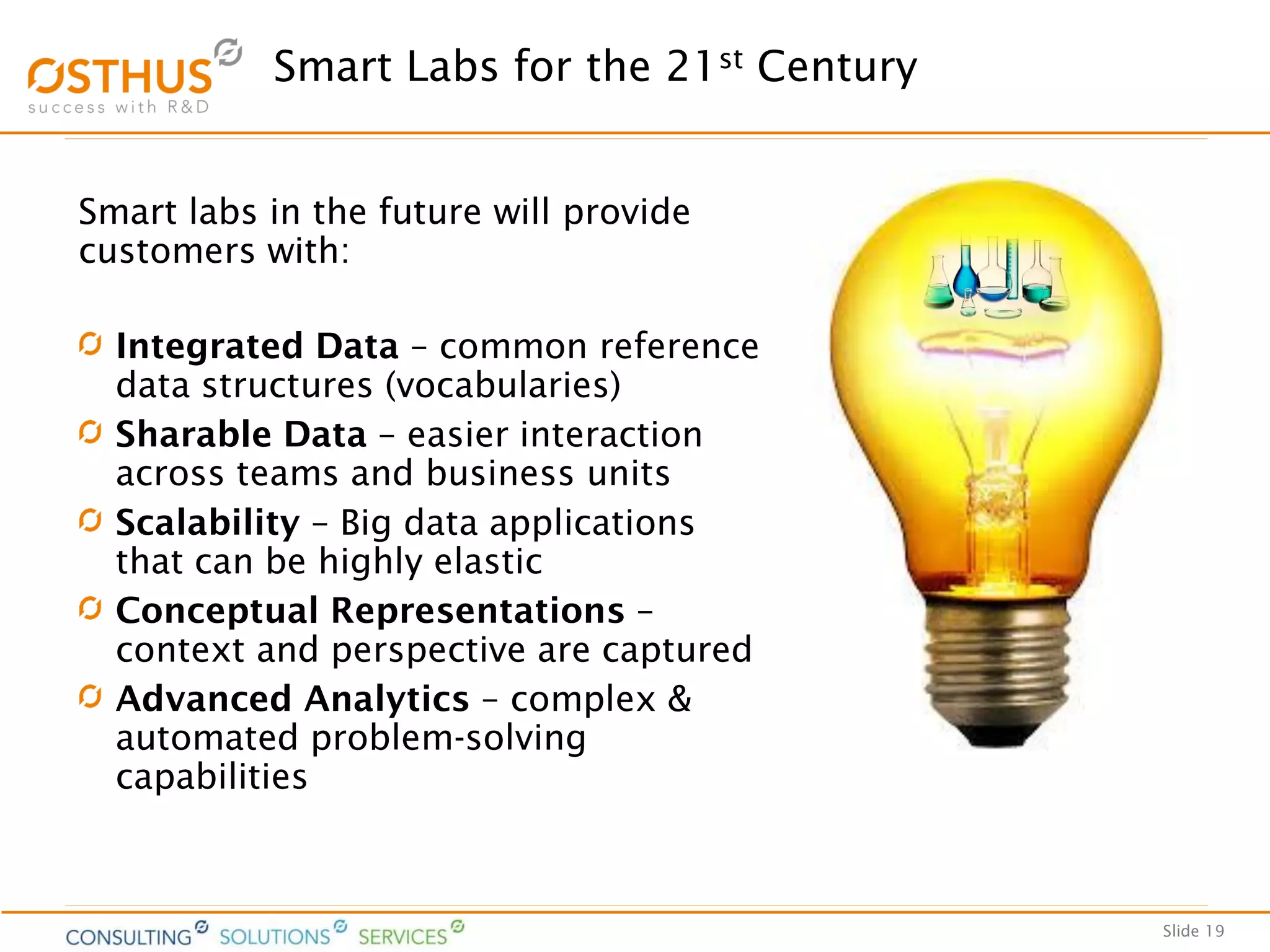This document discusses how semantic technologies can help improve the integration and sharing of laboratory data. It outlines some of the current challenges laboratories face with data silos and incompatible systems. Semantic technologies provide interoperability, improved searching and browsing, and the ability to reuse data. They also allow for automated reasoning by adding formal representations and logic. Moving forward, big data analytics will be increasingly important, and semantic technologies provide advantages by adding metadata, understanding relationships and context in data, and enabling better data models and integration across complex information. Ultimately, smart laboratories of the future can provide integrated, sharable, scalable data and analytics capabilities using these approaches.
